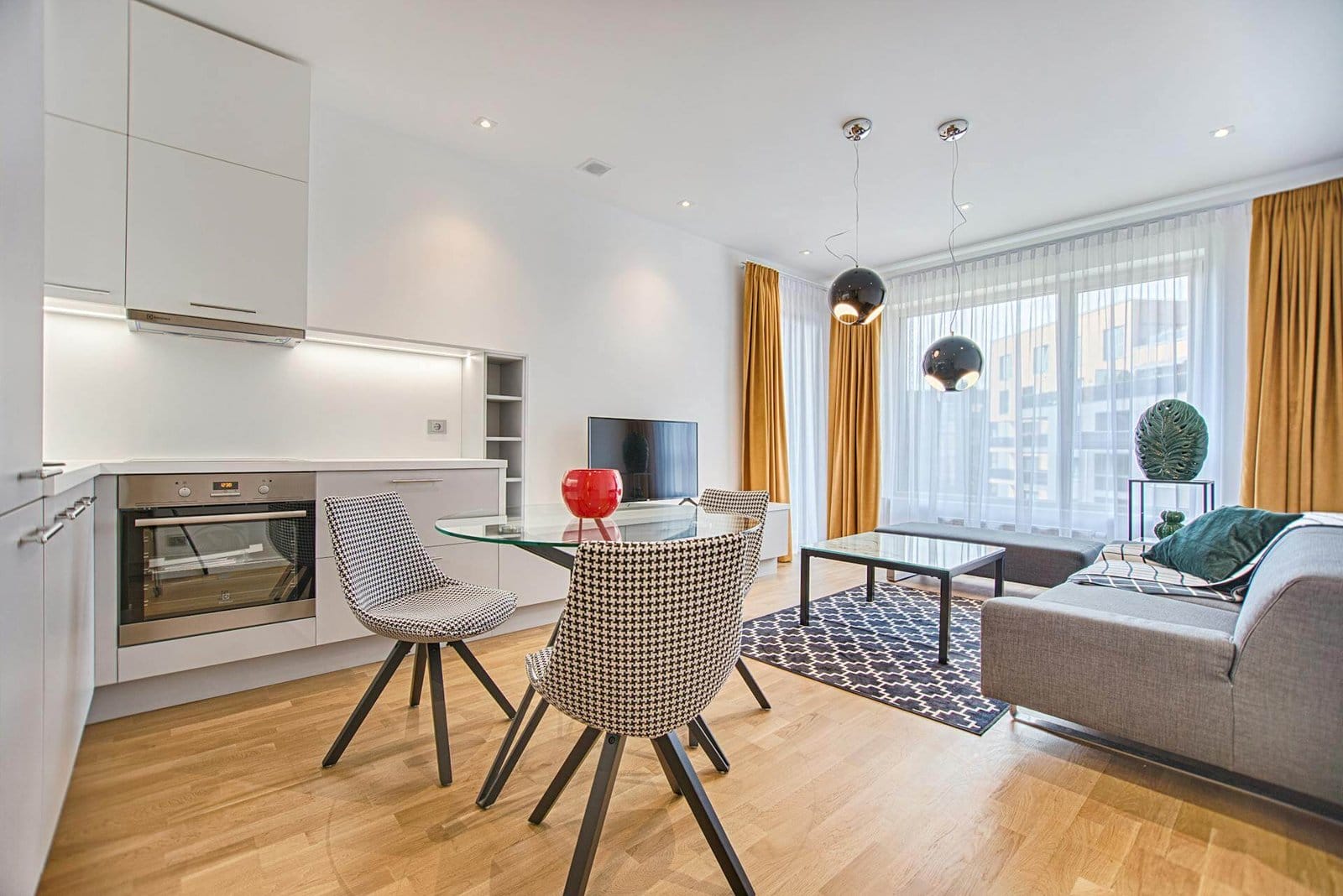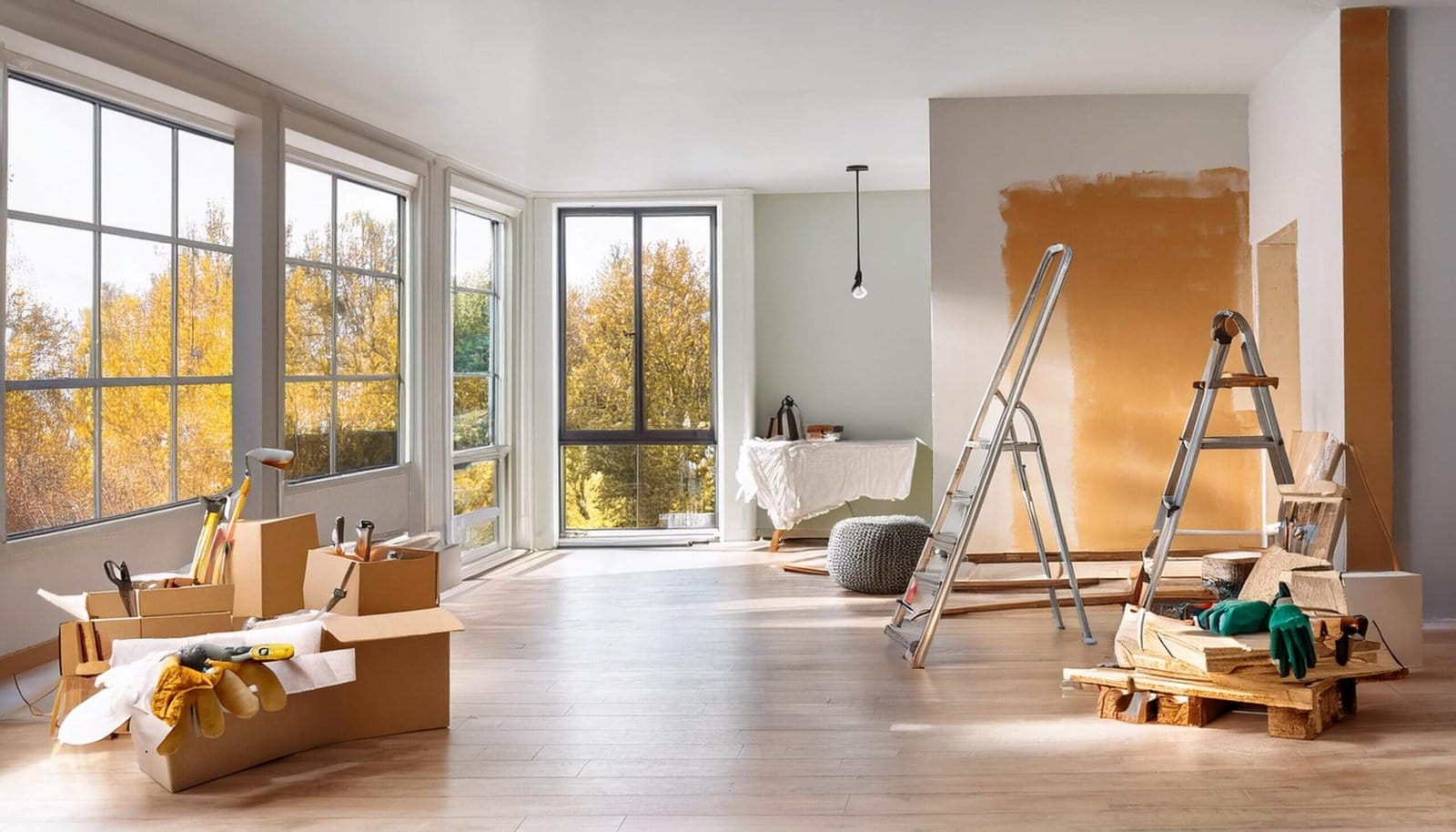
Renovating a home in Singapore involves several key steps. I have managed projects in both HDB flats and private condominiums. Through these experiences, I realized the importance of thorough planning, proper budgeting, and clear communication with contractors. This guide shares my insights on selecting materials for humid climates, working within local regulations, incorporating design elements for maximum comfort, and financing your renovation plans.
By focusing on essential details, you can create a space that feels comfortable, efficient, and aligned with Singapore’s unique environment. This guide covers budgeting, popular styles, space optimization, and more, all while following regulations set by HDB and other authorities.
Understanding Singapore’s Climate and Its Effects

Choosing the Right Materials
Singapore’s tropical climate includes high humidity and frequent rain. This environment affects material choices:
- Humidity-Resistant Flooring
- Vinyl flooring: Resists moisture better than untreated wood.
- Ceramic tiles: Durable and easy to clean.
- Countertops and Walls
- Quartz countertops: Withstand heat and resist mold growth.
- Heat-reflective paint: Lowers indoor temperatures when applied to exterior walls.
- Windows and Ventilation
- UPVC windows: Provide better insulation and reduce condensation.
- Laminated glass: Minimizes heat transfer and lessens external noise.
- Cross-ventilation: Use a layout that allows breezes to pass through your home.

Managing Tropical Conditions
- Thermal Comfort
- Energy-efficient cooling systems lower electricity bills.
- Maximize airflow with ceiling fans or louvered windows.
- Waterproofing
- Bathrooms, kitchens, and balconies require proper sealing to prevent leaks.
- If you live on a lower floor, consider elevating floors slightly in flood-prone areas.
- Incorporating Greenery
- Vertical gardens or potted plants can improve air quality indoors.
- Plants help lower ambient temperatures by providing shade and releasing moisture.
I installed a small vertical herb garden in my balcony. It keeps my home cooler during hot days and adds fresh herbs to my cooking.
Regulations and Compliance
HDB Guidelines
- Structural Changes
- Obtain permits for hacking walls or relocating doors.
- Submit detailed plans if you need major alterations (electrical, plumbing).
- Noise Restrictions
- HDB only allows noisy work on weekdays between 9 AM and 6 PM.
- Sundays and public holidays do not permit drilling or hacking.
- Prohibited Works
- Load-bearing walls cannot be removed.
- Fire safety elements must remain intact.
Private Property Regulations
- Building and Construction Authority (BCA)
- Renovations that affect structural integrity require official approvals.
- Owners of landed homes must adhere to local building codes.
- Sustainability Rules
- Projects seeking Green Mark certification must meet energy efficiency benchmarks.
Tip: Always check the latest HDB and BCA guidelines before starting any structural modifications. Non-compliance can lead to fines or forced reinstatement.
Popular Interior Design Styles in Singapore

Japandi (Japanese-Scandinavian Fusion)
- Clean lines and neutral color palettes
- Light woods combined with simple furniture
- Ideal for homeowners who value minimalism
Modern Luxury
- Smart home integration for lighting and appliances
- Sleek surfaces like marble countertops
- Monochromatic tones with polished metals for accents
Industrial Chic
- Exposed brick walls or concrete finishes
- Metal fixtures add a raw edge
- Balanced by darker color schemes for depth
Biophilic Design
- Natural materials such as bamboo and rattan
- Indoor plants that flourish in humid conditions
- Large windows that bring in abundant natural light
Peranakan-Inspired
- Ornate Peranakan tiles with vivid patterns
- Wooden carvings and vintage furniture
- Reflects Singapore’s unique heritage
Budget Planning and Cost Management
Setting a Realistic Budget
- Determine Priorities
- Structural fixes come first.
- Aesthetic upgrades can wait or be phased in over time.
- Save vs. Splurge
- Splurge on durable countertops or high-quality appliances.
- Save on decorative features or simpler light fixtures.
- Contingency Fund
- Keep 10–20% aside for sudden costs.
- Unexpected electrical rewiring or plumbing issues can appear.
Example: My first HDB renovation had a surprise plumbing leak. I used part of my contingency fund to fix it without delaying other works.
Average Renovation Costs (Singapore Estimates)
| Property Type | Approx. Cost | Scope |
|---|---|---|
| HDB Resale (5-room) | S$20,000–S$30,000 | Flooring, plumbing, basic carpentry |
| Condo (1,200 sq ft) | S$50,000–S$80,000 | Full renovation, custom finishes |
Costs vary based on material quality, complexity, and professional fees.
Financing Options

Renovation Loans
- Major Local Banks (DBS, Maybank)
- Loans up to 6x monthly income or S$30,000 (whichever is lower).
- Interest rates start around 4.08% per annum.
- HDB-Registered Contractors
- Some loans require you to work with approved contractors.
Personal Loans
- Flexible but higher interest rates (6–12% per annum).
- Suitable for smaller-scale items like furniture or décor.
Sustainability Grants
- NEA provides incentives for energy-efficient lighting and solar panel installations.
- Some schemes reduce initial costs of installing eco-friendly solutions.
Selecting the Right Professionals
Engaging Contractors and Interior Designers
- Registration Checks
- HDB or BCA-registered professionals ensure compliance with local standards.
- Portfolio Reviews
- Check completed projects on platforms like Qanvast or Livspace.
- Read client testimonials and look for consistent quality.
- Questions to Ask
- How many similar projects have you completed?
- What is your proposed timeline for this scope of work?
- Do you manage HDB approvals and permit applications?
- Does your quote include a warranty for defects?
Contract Terms and Workmanship
- Include clauses for defect liability periods of up to 12 months.
- Specify penalties for project delays or low-quality work.
- Conduct site inspections at key stages (post-hacking, pre-carpentry) to catch errors early.
Maximizing Space in Compact Homes
Many Singaporeans, including me, live in smaller apartments. Over the years, I learned practical methods to make homes feel open and welcoming.
Space Optimization Strategies
- Vertical Storage
- Floor-to-ceiling shelves or wall-mounted cabinets.
- Over-door hooks for bags and accessories.
- Multi-Functional Furniture
- Murphy beds with built-in desks for a guest room and office in one.
- Expandable dining tables that convert from a small console into a large dining surface.
- Sofa beds with real mattresses for comfortable sleepovers.
- Light and Color
- Mirrors placed opposite windows to reflect light.
- Pale wall colors, such as off-white or light gray, to brighten rooms.
- Zoning Techniques
- Define areas with rugs or sliding partitions.
- Keep an open-plan layout if possible to improve airflow.
Example Space-Saving Furniture
| Type | Example | Benefit |
|---|---|---|
| Loft Bed | Bunk bed with built-in desk | Maximizes vertical space |
| Storage Ottoman | Seating with hidden compartments | Dual function: seating + storage |
| Modular Shelving | Corner units that fit awkward spaces | Utilizes dead corners effectively |
| Foldable Desk | Wall-mounted workstation | Helps create a home office in tight areas |
| Nesting Tables | Tables that slide under each other | Easy to store when not in use |
Creating Multi-Functional Spaces
- Home Office and Guest Room
- A Murphy bed integrated with a bookshelf.
- Foldable partitions to offer privacy when needed.
- Kitchen and Dining
- Fold-down tables that attach to a wall panel.
- Pull-out counters that extend work surfaces.
- Living Room Storage
- TV consoles with shelves for books and décor items.
- Built-in cabinets with sliding doors to keep items organized.
A friend recently added a Murphy bed with a desk in her study room. She transformed it into a comfortable guest area on weekends without sacrificing her workspace.
Sustainable Renovation Practices
Eco-Friendly Materials
- Bamboo Flooring: Strong and quick-growing resource.
- Recycled Glass Countertops: Durable and stylish.
- Low-VOC Paints: Improve air quality.
Energy Efficiency
- LED Lighting: Uses around 75% less energy than incandescent bulbs.
- Smart Thermostats: Can lower cooling bills by up to 20%.
- Solar Panels: Many HDB blocks support solar installations for lower utility costs.
Benefits of Sustainable Choices
- Potential 20–30% savings on monthly utility bills.
- Some studies show green-certified homes can attract higher resale values.
- Compliance with the BCA’s Green Mark scheme ensures you meet key standards.
Simple Chart: Potential Savings from Energy-Efficient Lighting
| Lighting Type | Energy Use | Cost Over 5 Years |
|-------------------|---------------|--------------------|
| Incandescent | High | High |
| CFL | Medium | Medium |
| LED | Low | Low |
(Exact figures vary based on wattage and usage hours.)

Planning Your Renovation Timeline
Effective scheduling keeps projects on track and reduces stress:
| Phase | Duration | Key Activities |
|---|---|---|
| Design & Permit Approvals | 4–6 weeks | Finalize layout, submit HDB/BCA applications |
| Demolition & Structural | 1–2 weeks | Hack walls, set up electrical and plumbing frameworks |
| Installation | 3–6 weeks | Carpentry, flooring, painting |
| Final Touches | 1–2 weeks | Clean-up, furniture placement, defect inspection |
Notes:
- HDB approval times vary, but 4–6 weeks is typical.
- Keep buffer days for public holidays or contractor scheduling.
Communication Tips
- Weekly Check-Ins
- Schedule regular updates with your contractor.
- Track progress to spot delays quickly.
- Written Records
- Keep emails or messages of every design change.
- Document payment timelines and agreed costs.
- Resolving Disputes
- Raise concerns early to reduce confusion.
- If disagreements persist, seek help from a neutral mediator.
I once had a conflict with a contractor about unexpected wiring changes. We resolved it by reviewing our signed agreement. We clarified each cost and moved forward without further issues.
Personal Reflections
I renovated my first HDB flat with a limited budget. I splurged on a quality sofa because I spend most of my time in the living room. I saved on simpler light fixtures and used vinyl flooring in the bedrooms. My next priority involved installing energy-efficient windows to cut down on air conditioning expenses. By focusing on meaningful features, I created a comfortable home that stayed within my budget.
Staying organized helped me meet deadlines. I used spreadsheets for expenses and an online app to track progress. Clear communication with the contractor prevented costly mistakes. This organized approach gave me more control over my renovation.
Final Takeaways
- Start with a Detailed Plan
- List your must-have features and set a clear budget.
- Factor in a contingency reserve for hidden issues.
- Choose Materials Suited for Humid Climates
- Prioritize water-resistant flooring and paint.
- Invest in good ventilation to combat mold.
- Follow HDB and BCA Regulations
- Obtain the necessary permits for structural changes.
- Adhere to noise restrictions to avoid fines.
- Space Optimization
- Consider foldable furniture for multi-purpose rooms.
- Use vertical storage to save floor space.
- Sustainability Counts
- Low-VOC paints, LED lights, and bamboo flooring have long-term benefits.
- Government grants can offset the cost of eco-friendly additions.
- Stay on Top of Communication
- Conduct regular site inspections.
- Keep discussions with contractors in writing for clarity.
- Financing and Budget Management
- Compare renovation loans with personal loans for the best rates.
- Focus on durability where it matters and scale back on decorative items if funds run tight.
Renovating a Singapore home is an exciting venture. By taking note of local guidelines, climate factors, and sustainable options, you can build a space that meets functional needs without losing personal flair. The result is a comfortable home that reflects Singapore’s heritage and modern style, supported by well-planned finances and professional guidance.




